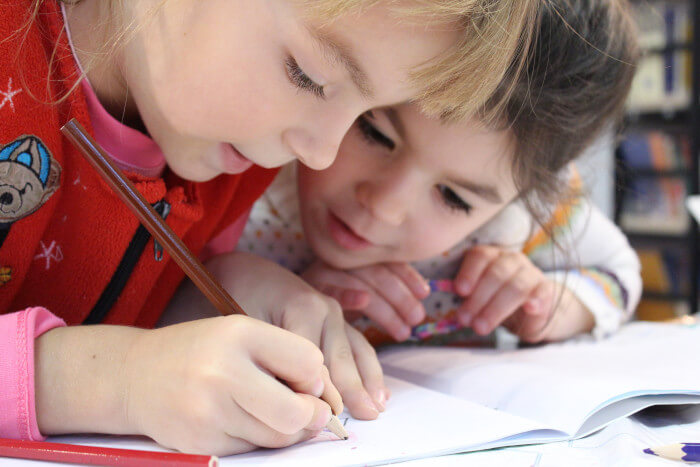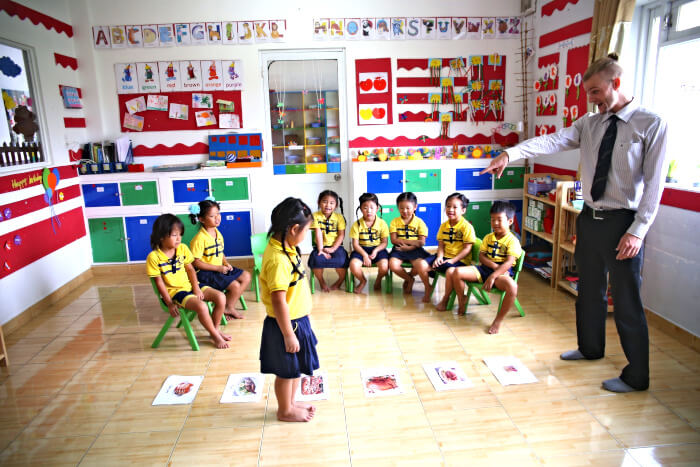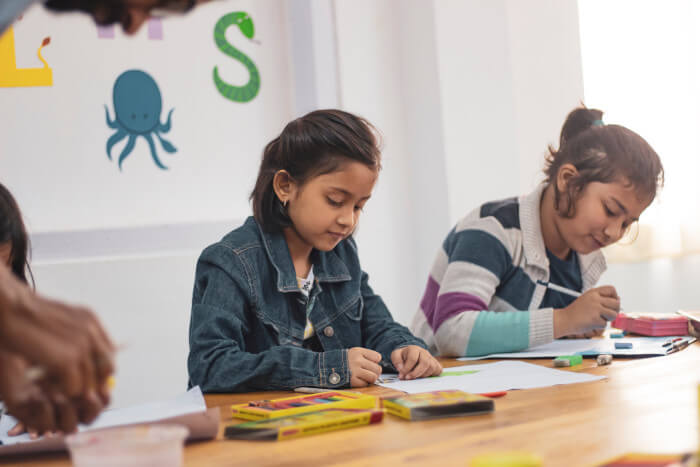Ideally, we want every student to be ecstatic about learning and school. Unfortunately, this is not always the case.
As teachers, we’re not only worried about clearly presenting material to students in a way they can understand, we’re also focused on making them want to learn. With every lesson, we find ourselves wondering how we can spark some interest in what we’re teaching. Let’s explore some ways to help make learning in our classrooms more engaging and fun.
How to make learning fun for your students

1. Connect learning to real life
“
When teaching a mathematical concept like averages, for example, show your students how they can use those calculations to find their average grades. You can also link averages to sports statistics for students who are interested in athletics to help them understand batting averages in baseball and shooting percentages in basketball.
When teaching science concepts, bring them to life with a science experiment. Don’t just talk about life cycles — get a caterpillar in your classroom, and have students journal its day-to-day changes. If possible, have a class pet around to help demonstrate various biology concepts. Students can take turns feeding the pet and giving it exercise and water. You can also discuss its environment and needs. And if you’re teaching students about plants, there are plenty o
Teaching students effective writing in English class? Show how being a good writer can help them express their thoughts more clearly in real-life scenarios. For example, students can publish small pieces online through personal blogs, enter writing contests, or even create cards and write letters to loved ones. Anything that makes an assignment more meaningful and engaging is definitely a plus.
Remember, u

2. Engage all kinds of intelligences
Students have many different gifts to offer. To get students more engaged in a new concept, let them use their strongest intelligence to work through it. In other words, whenever possible, give students a choice in the way they learn and demonstrate their knowledge. If you’re asking students to summarize a lesson, don’t just force everyone to write an essay or paragraph response. Instead, you could allow students to:
- Create a song to highlight the important points of the lesson.
- Draw a picture to illustrate what they learned or found most interesting.
- Deliver a quick, one-minute presentation in front of the class.
- And, of course, simply write an essay response (because there are students who enjoy this!).
By giving students some choices, you’ll be able to better engage them. If everyone is required to write a paragraph, you might lose some students who don’t enjoy writing. Yet if everyone is required to write and perform a song, you might lose the students who don’t enjoy singing in front of classmates. But if you offer a variety of options, students can choose what they do best and that sounds like fun. This gets the whole class involved, not just a few students.

3. Encourage movement in the classroom
Let’s face it, nobody enjoys sitting still for hours on end. This is the reason students tend to get antsy! But if your students are up and about, they’ll be more alert and engaged. Whenever you can add some movement to a lesson, make it happen — it’ll make things more lively and exciting for everyone.
When teaching new vocabulary, in addition to writing it down (or creating an accompanying illustration), you could have students demonstrate a movement that relates to the word, sort of like a reverse game of charades. Your entire vocabulary list then becomes an exercise in movement!
Have students clap once for agree and two times for disagree, or give answers in the form of a thumbs up or thumbs down. They can also respond by moving to different corners of the room.
If your school allows it and weather permits, take your class outside for a lesson. They can sit in circles and work on something together in small groups. Students are often inspired by some fresh air and sunshine.
Change the physical space of the learning environment. Move your desks around. Get rid of desks on certain days and only use chairs. Head to the gym if you can do a lesson on physics or math involving movement.
Be on the lookout for ways to sneak some movement into your lesson plans. Students are definitely more engaged when they’re not just sitting the entire time.

4. Integrate technology into learning
Kids love technology. And in moderation, technology can be a valuable tool in the classroom. Students have fun (and learn) while playing educational computer games and doing online practice activities.
One big
Technology can also bring a lesson to life for students. Virtual reality field trips are becoming increasingly popular and affordable for school districts. An art teacher can use virtual reality (VR) to take students on a trip through the Louvre Museum in Paris. A science teacher can use VR to show students the inside of a human body or the ecosystem of the ocean. Students can visit places such as the Grand Canyon, Washington, D.C., and the pyramids of Egypt.
With the popularity of cell phones, students are able to engage in whole-class reviews through apps like Kahoot, where they compete with classmates to see how many answers they can get correct. Students can also use cell phones to look up information about anything being taught in class. Need to know how to say a word in Spanish? Look it up. Wondering how many miles New York is from Los Angeles? Look it up. Students have a wealth of interactive information in the palm of their hands, and they enjoy when they’re given the chance to use it.

5. Encourage interaction
Two heads truly are better than one. When students are learning, it can be much more fun and engaging for them to work with a classmate. Look for ways for students to work with each other in the classroom. Think-pair-share activities are a great method. Give a student individual time to think, let them pair up and discuss with a partner, and then have them share ideas with the entire class.
You can assign partners or simply let students choose a learning buddy. You can also encourage students to change partners often. Set a timer and let them work with a person for two minutes. Once the time is up, they must pick a new partner. Do this for an entire activity, and a student may work with 15 others in the classroom! All of those interactions will make the learning process a lot more fun.

6. Host some friendly competitions
Students have fun playing games. And sometimes, they don’t even realize that they’re learning because a game is so amusing!
Teachers can have prizes or incentives like homework passes for winners. Some classrooms use a sticker chart to have an on-going competition that can last all semester long. Candy is always a big hit with students as well. There are review games like bingo and Pictionary. Some teachers have a Jeopardy template they use to play games in class. The Internet offers a lot of interactive games as well.
Learning is fun (if done correctly!)
Making learning fun and engaging can be difficult, but it’s definitely rewarding when you pull it off. When lessons are interactive and apply to real life, students are more likely to follow along and retain what they learn. As students are more engaged and have fun with lessons, you also end up enjoying class even more because it’s rewarding to see the positive impact that your material is having on your students. It’s a win-win for everyone!
Photo credit: Pixabay / Pexels.com
Personalized Learning


